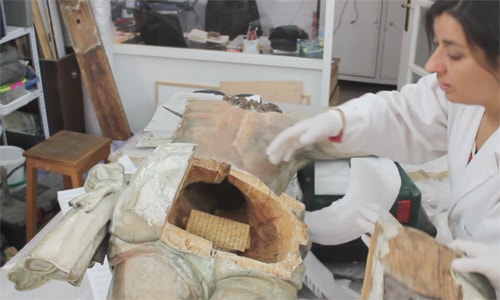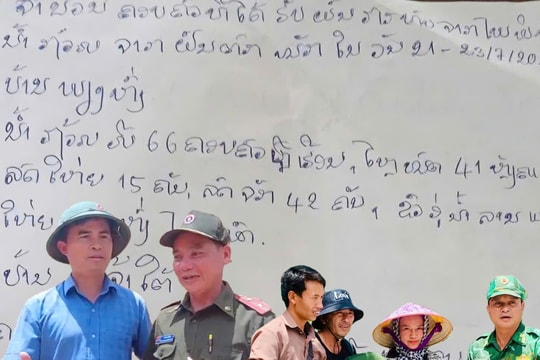18th-century 'time capsule' discovered in statue of Jesus
Experts found a secret compartment hiding two letters from 1777 inside a statue of Jesus.
 |
Spanish historians discovered a secret compartment containing ancient documents that could be a time capsule while restoring an 18th-century statue of Jesus, National Geographic reported on December 4. A time capsule is a place where historical documents or objects representing the culture of that period are carefully preserved for future generations to discover.
The statue, a depiction of Jesus on the cross, is housed in the church of St. Águeda in northern Spain. It began to develop cracks and loosen from its support, according to restorer Gemma Ramírez. When the team lifted the statue onto a workbench, they discovered something inside.
They opened the statue’s rear and found documents describing life in late 18th-century Spain. Two handwritten letters, dated 1777 and yellowed, bore the signature of Joaquín Mínguez, a chaplain at the Burgo de Osma church.
 |
| A team of experts discovered ancient documents describing life in the 18th century. Photo: National Geographic. |
In his letter, Mínguez paints a picture of the economic and cultural activity of the time, noting that the statue was made by a man named Manuel Bal, who also made many other wooden statues for churches in the area.
Mínguez describes bountiful harvests of wheat, rye, oats, and barley, as well as wine shops. He also lists diseases such as typhoid that were prevalent in the village at the time. According to the letter, people used cards and balls for recreation.
In addition to life in the village, Mínguez also wrote about Spanish politics. King Carlos III was in power at the time and his palace was in Madrid. The letter also mentioned the Spanish Inquisition, which lasted from 1478 to 1834.
The extensive descriptions in the letters suggest that Mínguez wanted to turn them into a time capsule for future generations, historian Efren Arroyo told El Mundo.
The restoration team called it one of the most surprising finds. The two letters were then sent to the Archbishop of Burgos for safekeeping. Experts also replaced a copy in the statue's original position, as Mínguez intended.
According to VNE
| RELATED NEWS |
|---|




.jpg)

